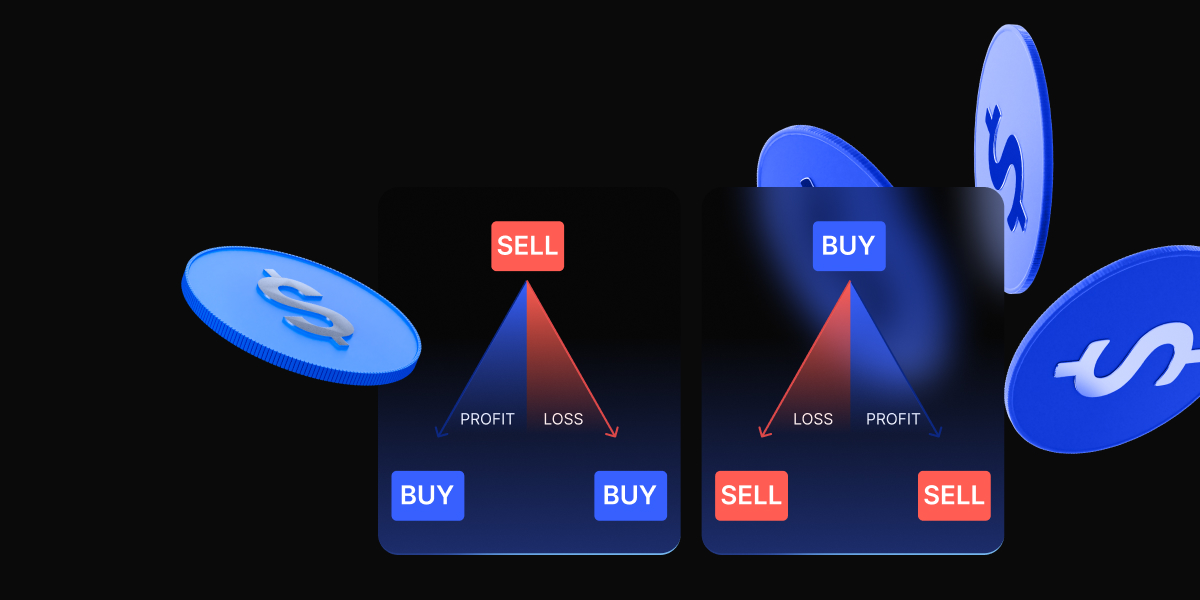Bitcoin hashrate is a critical metric in Cryptocurrency mining. It represents the computational power used to mine and process transactions on the Bitcoin network. Understanding hashrate is essential for anyone involved in Bitcoin, from miners to investors. This article unpacks the different sides and layers that make hashrate an important element of the Cryptocurrency ecosystem.
Key takeaways
- Hashrate definition: the measure of computational power in Bitcoin mining
- Security indicator: a higher hashrate means a more secure Cryptocurrency network
- Mining efficiency: influenced by hardware advancements and Bitcoin’s market price
- Network health: reflects the robustness of the Bitcoin ecosystem
What is Bitcoin hashrate?
Bitcoin hashrate refers to the total computational power used by miners to solve complex mathematical problems, which validate transactions and secure the network. Measured in hashes per second (H/s), it indicates how many calculations are performed every second across the Bitcoin network.
Hashrate is crucial because it directly impacts the network’s security and efficiency. A higher hashrate means more miners participate, making it harder for any single entity to control the network. This decentralisation is fundamental to Bitcoin’s security model, preventing attacks and ensuring the integrity of the blockchain.
In practical terms, the hashrate can be seen as a measure of the network’s health. When the hashrate increases, it suggests that more miners are joining the network, attracted by the potential rewards. Conversely, a declining hashrate might indicate that mining is becoming less profitable, possibly due to lower Bitcoin prices or higher operational costs.
How Bitcoin hashrate works
Bitcoin mining involves solving cryptographic puzzles using the SHA-256 hashing algorithm. Miners compete to find a nonce – a random number that, when hashed, produces a hash value with a specific number of leading zeros. This process is known as proof-of-work (PoW).
The SHA-256 algorithm generates a unique 256-bit hash for each input. Miners repeatedly change the nonce and rehash the data until they find a hash that meets the network’s mining difficulty target. This target adjusts approximately every two weeks to ensure that new blocks are added to the blockchain roughly every 10 minutes.

The concept of nonce is central to mining. When miners change the nonce and rehash the data, they generate a new hash. The hashrate measures how many hashes are made per second. For example, a hashrate of 1 TH/s means the miner is making one trillion guesses per second.
The importance of hashrate in Bitcoin’s ecosystem
Hashrate is a key indicator of the Bitcoin network’s security. A higher hashrate means more computational power is required to alter the blockchain, making it more resistant to attacks. Specifically, it protects against 51% attacks, where a single entity gains control of more than half of the network’s mining power and can manipulate transactions.
Moreover, the hashrate reflects the overall health and robustness of the Bitcoin mining ecosystem. A growing hashrate suggests that mining is profitable and that miners are confident in the network’s future. It can also determine that the network is becoming more decentralised, as more miners join and distribute the computational power.
The hashrate is a barometer for the network’s security and stability. It provides insights into the economic incentives for miners and the overall confidence in Bitcoin as a secure and reliable digital currency.
Factors influencing Bitcoin hashrate
Several factors influence Bitcoin’s hashrate, with advancements in mining hardware being one of the most significant. As technology evolves, new mining equipment becomes more efficient, capable of performing more hashes per second. This increase in efficiency drives up the hashrate, as miners can achieve higher outputs with the same or lower energy consumption.
The relationship between Bitcoin’s market price and miners’ motivation is crucial. When Bitcoin prices rise, mining becomes more profitable, attracting more miners and increasing the hashrate. Conversely, when prices fall, some miners may find it unprofitable to continue, leading to a decrease in hashrate.
Additionally, external factors such as regulatory changes, energy fees, and technological innovations can impact the hashrate. For instance, regions with cheaper electricity may see a surge in mining activity, boosting the overall hashrate.
Hashrate fluctuations and impact
What happens when the hashrate fluctuates? There are several scenarios we need to consider.
Consequences of hashrate changes
Hashrate fluctuations can have significant short-term and long-term effects on the Bitcoin network. In the short term, a sudden drop in hashrate can reduce the network’s security, making it more vulnerable to attacks. It can also lead to slower transaction processing times, as fewer miners are available to validate transactions.
In the long term, sustained changes in hashrate can influence the network’s difficulty adjustment mechanism. If the hashrate remains low, the network will lower the difficulty to ensure blocks are mined consistently. Conversely, a high hashrate will increase the difficulty, maintaining the balance of block production.
Notable hashrate milestones
Bitcoin’s hashrate has seen several significant milestones over the years. For example, in May 2011, the network’s hashrate surpassed 1 TH/s, marking a major step in its growth. These days, the hashrate has surged past 600 EH/s., reflecting the increasing participation and investment in Bitcoin mining.
These milestones highlight the network’s evolution and the growing interest in Bitcoin as a digital asset. They also underscore the importance of hashrate to measure the network’s security and robustness.
Measuring and monitoring hashrate
Various tools and platforms are available for monitoring Bitcoin hashrate in real time. Websites like Hashrate Index and 2Miners provide detailed charts and data on the current hashrate, allowing miners and investors to track changes and make informed decisions.
Interpreting changes in hashrate is crucial for understanding the network’s health. A rising hashrate indicates growing miner participation and confidence in the network, while a declining hashrate may signal potential issues or reduced profitability. For investors, these trends can provide insights into the market dynamics and the potential future direction of Bitcoin.
Hashrate and Bitcoin’s future
What does the future hold for Bitcoin and how does hashrate affect it?
Predicting hashrate trends
Several factors could influence future hashrate trends, including advancements in mining technology, changes in energy costs, and regulatory developments. As mining hardware becomes more efficient, the hashrate will likely continue its upward trajectory. However, external factors such as government policies and environmental concerns could also impact the growth of the hashrate.
Hashrate in the era of Bitcoin halving
Bitcoin halving events occur approximately every four years and reduce the block reward by half. These events can significantly impact the hashrate as they alter the economic incentives for miners. While the reduced rewards may initially lead to a drop in hashrate, Bitcoin’s increased scarcity often drives up its price, eventually attracting more miners and boosting the hashrate.
Risks and considerations for miners
For miners, profitability is closely tied to the hashrate, mining difficulty, and Bitcoin price. As the hashrate increases, so does the competition, making it harder to mine new blocks. To remain profitable, miners must continually invest in more efficient hardware and seek low-cost energy sources.
Additionally, regulatory changes and market volatility can pose risks to miners. Staying informed about these factors and adapting to changes in the mining landscape is crucial for long-term success.
Conclusion
Bitcoin hashrate is a vital metric that reflects the network’s security, health, and overall robustness. Understanding how it works and the factors that influence it can provide valuable insights for miners and investors alike. As the Bitcoin network continues to evolve, monitoring hashrate trends will remain essential for navigating the dynamic world of Cryptocurrency.
Which Crypto has the highest hashrate?
Bitcoin currently has the highest hashrate among all Cryptocurrencies.
Is a high hash rate good?
Yes, a high hash rate indicates a more secure and robust network.
How much hashrate is needed to mine 1 BTC?
The hashrate required to mine 1 BTC varies based on network difficulty and mining efficiency.
What is effective hash rate?
Effective hash rate is the computational power a miner or mining pool contributes to the network.
What does an increased hash rate mean?
An increased hash rate means more computational power is being used to secure the network, enhancing its security and stability.
The content provided here is for informational purposes only. It is not intended as personal investment advice and does not constitute a solicitation or invitation to engage in any financial transactions, investments, or related activities. Past performance is not a reliable indicator of future results.
The financial products offered by the Company are complex and come with a high risk of losing money rapidly due to leverage. These products may not be suitable for all investors. Before engaging, you should consider whether you understand how these leveraged products work and whether you can afford the high risk of losing your money.
The Company does not accept clients from the Restricted Jurisdictions as indicated in our website/ T&C. Some services or products may not be available in your jurisdiction.
The applicable legal entity and its respective products and services depend on the client’s country of residence and the entity with which the client has established a contractual relationship during registration.




